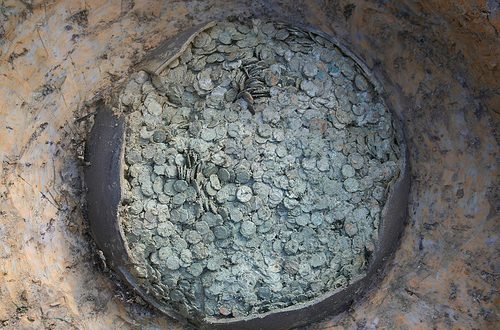 It was announced at a press conference yesterday in Rome that the oldest known images of the apostles Peter, Andrew and John have been uncovered in one of the city’s Christian catacombs.
It was announced at a press conference yesterday in Rome that the oldest known images of the apostles Peter, Andrew and John have been uncovered in one of the city’s Christian catacombs.
The images date from the late fourth century AD and were found in the underground chambers of the catacombs of Santa Tecla, in the south of the city near San Paolo Fuori le Mura on via Ostiense.
Professor Fabrizio Bisconti, a university professor at lUniversit Roma Tre and an expert in christian and medieval iconography, told me: Last year the earliest image of Saint Paul was discovered at Santa Tecla. This year the restoration work has continued and more images have been uncovered. It’s an exceptional discovery that was made by using a laser technique to uncover the yellow and red pigments beneath layers of calcium deposits. The tomb is believed to have belonged to a noble woman of Rome.
This announcement comes after the initial discovery last year of the portrait of Saint Paul, reported here on Heritage Key.
 The restoration of the frescoes in the tomb was managed by the Vatican’s archaeology office, the Pontificial Commission for Sacred Archaeology, and cost EUR 60,000.
The restoration of the frescoes in the tomb was managed by the Vatican’s archaeology office, the Pontificial Commission for Sacred Archaeology, and cost EUR 60,000.
Chief restorer Barbara Mazzei told Associated Press: Using the laser, restorers were able to sear off all the layers of calcium that had been bound onto the painting because the laser beam stopped burning at the white of the calcium deposits, which when chipped off left the brilliant darker colors underneath it unscathed.
According to L’Osservatore Romano, the Vatican daily newspaper, the delicate restoration programme began two years ago.
 The face of Saint Paul was uncovered last year, recognisable by its pensive eyes, hollow cheeks and pointed dark beard.
The face of Saint Paul was uncovered last year, recognisable by its pensive eyes, hollow cheeks and pointed dark beard.
Saint Peter’s face was characterised by his white beard and square face, while Andrew and John were identified by comparisons with other monuments.
The tomb itself is square with arches on three sides a typical layout for Roman tombs of that time, which were arranged in clusters around large sanctuaries in the suburbs of imperial Rome.
A noblewoman, dressed in luxurious clothes and standing next to a child and between two saints, is depicted in one of the arches.
The rest of the tomb is painted with Biblical scenes, including Saint Peter drawing water in the Mamertine prison, Jonah, Daniel, Mary and the Magi and an image of Abraham and Isaac.
On the ceiling, a central panel shows Jesus as a shepherd, while four smaller circles depict the faces of Paul, Peter, John and Andrew.



